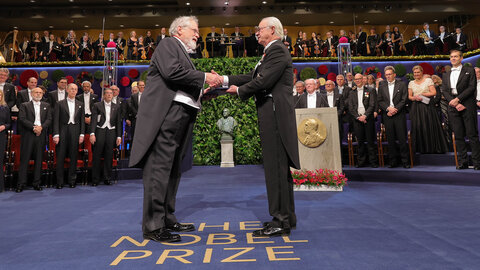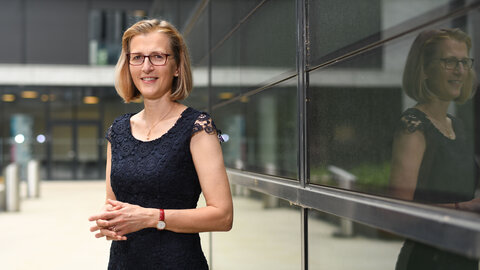But where did the gene scissors come from? Who discovered them? And how do they work? Their history takes us from the salt flats of the Spanish Mediterranean to the basement of the French Ministry of Defense and Danish yogurt factories. It is about science pioneers who have conducted off-the-mainstream and seemingly exotic research. It is also the fascinating story of Emmanuelle Charpentier, who put together the pieces of the CRISPR system and ensured that the molecular gene scissors would actually start cutting.
Let’s start at the beginning: the official starting signal was given in 1987 but went absolutely unnoticed. At that time, Japanese researchers reported a strange pattern in the genetic information of an intestinal bacterium: repetitive DNA fragments, which are known today under the somewhat unwieldy name of “clustered regularly interspaced short palindromic repeats” (CRISPRs for short).
A few years later, researchers became acutely aware of Haloferax mediterranei, an archaea bacterium. Many of the microbes in the archaea group are known to love extremes. Haloferax likes extremely salty environments and thrives in the salt flats of the Spanish Mediterranean. And again, researchers found this peculiar repetitive DNA code. The science world soon learned that this special DNA code occurs in very different microbes.
Looking for forensic methods to detect bioweapons, the French military investigated plague bacteria from an outbreak in Vietnam – and there it was again, the repetitive CRISPR code. At that point, several scientists surmised that CRISPR could perhaps be a kind of “immunological memory”. Although invisible to our eyes, a brutal battle for survival between bacteria and viruses is fought every day. Viruses infect bacteria, and bacteria have to put up a defense. Did CRISPR contain a license to kill viruses?
What was urgently needed at that point was experimental proof of this extraordinary idea. And again it came from an unusual source. In the production of yogurt and other dairy products, viruses that attack and destroy lactic acid bacteria are a threat. A researcher in the dairy industry realized that lactic acid bacteria were resistant to viruses whenever these bacteria carried the CRISPR code. Slowly, the secret of the gene scissors started to become unveiled.




![[Translate to English:] Christa Schleper entnimmt eine Sedimentprobe aus der Donau](/fileadmin/_processed_/3/e/csm_Christa_Schleper_cUlrichZinell_ef90da6f10.jpg)
![[Translate to English:] Wolfgang Lutz blättert in einem großen Atlas](/fileadmin/_processed_/c/6/csm_Wolfgang_Lutz_cHerbertNeubauer_picturedesk_f0e494e876.jpg)


![[Translate to English:] Portrait Walter Pohl](/fileadmin/_processed_/1/2/csm_Portrait_WalterPohl_cFWF_LuizaPuiu_c0acb71e9a.jpg)
![[Translate to English:]](/fileadmin/_processed_/5/b/csm_Ferenc_Krausz__C__%C3%96AW_APA-FOTOSERVICE_MARTIN_H%C3%96RMANDINGER_2_ed50c7acf1.jpg)
![[Translate to English:]](/fileadmin/_processed_/0/d/csm_FWF_AustrianScienceAwards2025_EllyTanaka_cFWFKlausRanger_3f3f257163.jpg)